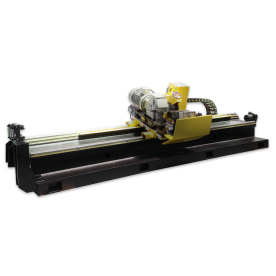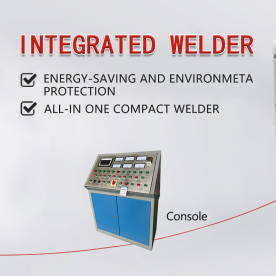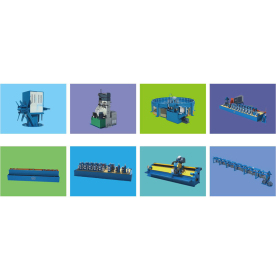[Induction heating equipment]Understanding Induction Heating Equipment: Revolutionizing Metal Processing and Its Applications Across Various Industries
News 2025-1-17
****Induction heating equipment has transformed the metal processing industry, providing a revolutionary method for heating metal through electromagnetic induction. This advanced technology has gained significant popularity due to its efficiency, precision, and versatility compared to traditional heating methods. From automotive manufacturing to jewelry making, the applications of induction heating are diverse and impactful, significantly improving production processes and end products.
How Induction Heating Works
At its core, induction heating relies on the principle of electromagnetic induction. When an alternating current passes through a coil, it generates a magnetic field that induces electrical currents, known as eddy currents, within conductive materials placed within that field. These eddy currents produce heat due to the resistance of the material. The process is efficient and quick, heating the material from within without the need for direct contact with a flame or electrical arc.
The induction heating equipment typically consists of an induction coil, a power supply, and a workpiece. The power supply generates high-frequency alternating current, which is fed into the induction coil. As the coil creates a magnetic field, the workpiece heats up almost instantaneously. This non-contact heating method allows for precise temperature control, minimizing energy usage and waste, making it a preferred choice in numerous industrial applications.

Understanding Induction Heating Equipment: Revolutionizing Metal Processing and Its Applications Across Various Industries
1. **Efficiency**: Induction heating equipment is highly efficient, with up to 90% of the energy being converted into heat. This efficiency reduces overall energy consumption and lowers operational costs.
2. **Speed**: One of the most significant advantages of induction heating is its speed. The heating process can be nearly instantaneous, reducing production times and increasing productivity in manufacturing operations.
3. **Precision**: Induction heating allows for precise control over temperature and heating rates, enabling manufacturers to achieve consistent and uniform results. This precision is vital in applications such as hardening and tempering metals, where specific temperatures must be achieved for desired material properties.

Understanding Induction Heating Equipment: Revolutionizing Metal Processing and Its Applications Across Various Industries
5. **Safety**: The lack of open flames and reduced risk of overheating compared to traditional methods makes induction heating inherently safer. Additionally, the equipment can be designed with built-in safety features that ensure operators are protected from potential hazards.
Applications of Induction Heating Equipment
Induction heating finds broad applications across various industries:
- **Automotive Industry**: Induction heating is widely used for hardening and tempering steel components, such as gears and crankshafts, improving their durability and performance.
- **Manufacturing**: It is utilized for welding, bonding, and metal forming processes, enhancing productivity and ensuring quality in metal fabrication.
- **Jewelry Making**: Induction heating equipment is essential in the jewelry industry for soldering and joining different metal components, providing high precision and reducing metal distortion.
- **Electronics**: In electronics manufacturing, induction heating is used to solder components onto printed circuit boards (PCBs), ensuring a reliable electrical connection.

Understanding Induction Heating Equipment: Revolutionizing Metal Processing and Its Applications Across Various Industries
The Future of Induction Heating Technology
As technology advances, induction heating equipment is becoming increasingly sophisticated. Innovations include the development of compact and portable induction heaters, improvements in power supply technologies, and enhanced automation capabilities. Additionally, there is a growing trend toward integrating smart technology in induction heating systems, allowing manufacturers to monitor and control the heating process remotely through IoT devices.
As industries continue to strive for efficiency and sustainability, the role of induction heating equipment will likely expand. Businesses that adopt this technology will gain a competitive edge, driving innovation and pushing the boundaries of what is possible in metal processing and beyond.
Conclusion
In conclusion, induction heating equipment represents a significant advancement in heating technology, offering unmatched efficiency, speed, and precision across various industries. Understanding its principles and applications opens the door to countless possibilities, making it a crucial asset in modern manufacturing processes. As this technology continues to evolve, businesses that harness the power of induction heating will undoubtedly benefit from enhanced productivity, quality, and sustainability in their operations.
